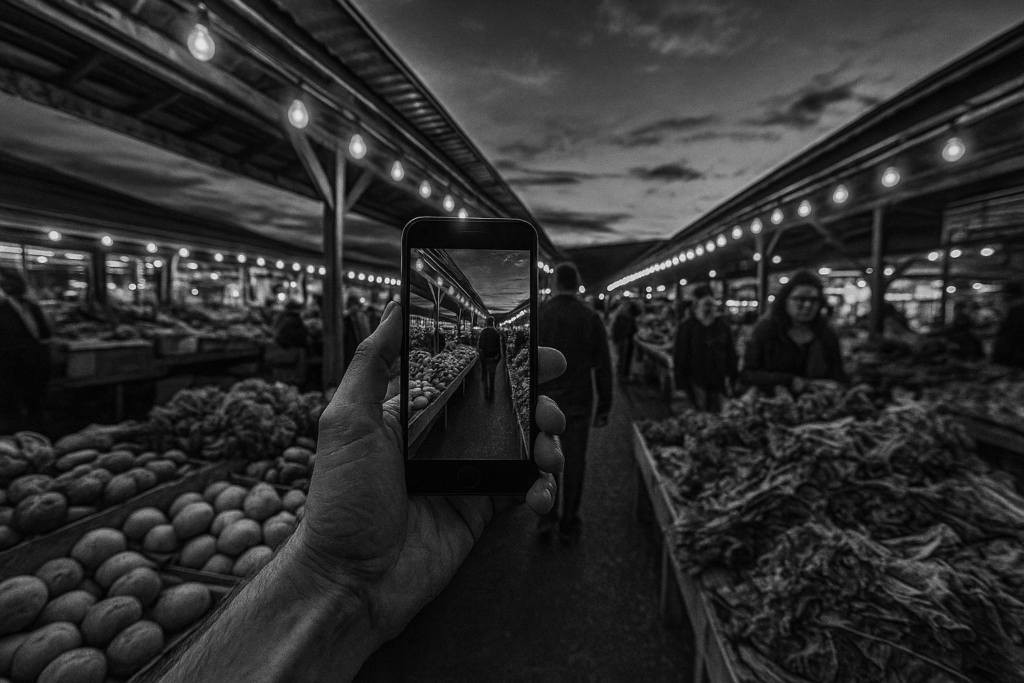Introduction: Why User-Generated Content (UGC) Is Everywhere
For years, brands focused on polished campaigns, tight messaging, and full control over their narratives. That’s over. What’s working now is raw, unfiltered, and made by regular people. UGC—user-generated content—isn’t just part of the mix anymore. It’s driving the conversation.
The shift is rooted in trust. Consumers are tuning out brand messaging and listening to peers. A quick stat to frame the trend: according to Nielsen, 92% of consumers trust UGC more than traditional advertising. Beyond trust, UGC drives real business outcomes. It improves engagement rates, boosts conversions, and builds long-term communities—not just audiences.
At a time when attention is scattered and advertising fatigue is real, the voice that cuts through is the one that doesn’t sound like it’s trying. That’s where UGC thrives.
What Counts as UGC Today
User-generated content isn’t just tweets and comment-section debates anymore. Traditional formats like social posts, customer reviews, and casual comments still anchor the category—they’re quick, raw, and honest. People scroll through reviews before buying and trust a tag from a friend more than polished brand promos.
But in 2024, UGC has leveled up. Reaction videos, unboxing clips, and livestream shoutouts now carry serious weight. These dynamic, unscripted moments offer immediacy and feeling that static posts don’t. Viewers get to see real-time opinions, genuine surprise, or frustration in a way that builds trust faster than a branded campaign can.
The line between viewer and creator is getting fuzzier too. Audiences aren’t just reacting—they’re riffing, remixing, stitching, and duetting content. In many cases, creators aren’t just fans—they’re unofficial collaborators, shaping how products and ideas get experienced online. The best UGC in 2024 doesn’t just talk about a brand—it becomes part of the brand’s story.
Why UGC Works
People are tired of being sold to. That’s why user-generated content works—it feels real because it is. When someone posts a review, shares an unboxing, or gives a raw take on a product, viewers trust it more than any polished ad. There’s no fancy lighting, no script, no pitch. Just someone’s honest opinion. Built-in authenticity like that is hard to fake—and brands know it.
That honesty drives what marketers call social proof at scale. If five strangers talk about a face cream or a sneaker drop and all love it, others take notice. It snowballs. One post becomes ten, ten become a hundred. Before you know it, there’s a movement, not a campaign.
For companies, the economics make sense. UGC is cheaper than big-production content—and often hits harder. Creators reach niche audiences with more trust and less spend. Everyone wins: brands get reach, users get genuine stories, and audiences get information they actually believe.
Platforms Fueling the UGC Boom
TikTok, Instagram Reels, Reddit, YouTube Shorts—these aren’t just platforms anymore. They’re overnight studios, broadcast towers, and marketplaces rolled into a single tap. Anyone with a phone and something to say can post a clip that reaches millions. These platforms have cracked the code: make it dead simple to create content, and reward regular users like stars.
The tools have leveled up too. Built-in editors, templates, text overlays, and sounds turn raw footage into polished posts in minutes. You don’t need fancy gear or technical know-how. If you’ve got personality and a perspective, you’ve got everything you need.
On top of that, engagement incentives are baked into the platform algorithms: views, placements on “For You” pages, trending badges, and even small creator funds. The goal is clear—keep users posting, reacting, remixing. The more participatory the ecosystem, the more addictive it gets. And for brands or creators trying to ride the wave, tapping into that energy is no longer optional—it’s the playbook.
The Business of UGC
Brands aren’t just watching from the sidelines anymore—they’re digging directly into the content stream. These days, sourcing user-generated content (UGC) is less about stumbling on a viral post and more about structured discovery. Dedicated teams and tools scrape platforms for on-brand videos, reviews, and visuals. Some brands set up hashtags as beacons. Others use AI filters and dashboards to monitor what’s catching fire within their target audience.
The next step? Turning creators into partners. Many UGC makers are stepping into sponsored roles, not because they pitched, but because their unpaid content performed. Brands are offering flat fees, commissions, or long-term deals. It’s less about follower count and more about content quality and relatability. This bottom-up approach puts unknown creators right alongside influencers in media campaigns.
But there’s a fine line between admiration and appropriation. Legal frameworks around UGC are still solidifying. Just because it’s online doesn’t mean it’s free to use. Brands need clear permissions, and creators are demanding proper credit—and pay. Ethics matter too: transparency, attribution, and data privacy are uphill concerns. Bottom line—if you’re using someone else’s work to build yours, do it right.
Not Just for Consumer Brands
User-generated content (UGC) isn’t just a playground for beauty brands and sneaker drops anymore. It’s moved upstream—into B2B marketing, education, and journalism—with surprising force. In B2B, testimonials, product walkthroughs, and thought leadership from real users now outperform polished whitepapers. Brands are letting their customers speak, and guess what? Decision-makers are listening.
In education, UGC is showing up in the form of peer-led tutorials, student-produced explainers, and crowd-sourced study hacks. This kind of content is direct, unfiltered, and often more engaging than top-down instruction. It reflects how people actually understand material—not how institutions want it said.
News media is also tapping the crowd. Stories break first through smartphone footage, eyewitness posts, and comment threads. At major outlets, user content has shifted from a novelty to a core source. Raw doesn’t mean unreliable—it just means fast, local, and real.
Internally, UGC is becoming a subtle tool for employer branding. Companies are encouraging employees to share work culture experiences on social and internal platforms. Employee-created content—whether it’s a funny Slack story or a personal growth video—is now helping attract talent better than career pages ever could.
The pattern is clear: communities aren’t just consuming—they’re shaping narratives, products, and perceptions. UGC gives organizations more than content. It gives them credibility.
Challenges That Come With Growth
User-generated content opens the floodgates. That’s part of its strength—and its weakness. When anyone can post anything, the lines between authentic and reckless start to blur. For brands, this means dialing up quality control and brand safety. One bad post that slips through can do more damage than a year of polished campaigns can undo.
Misinformation is the other landmine. UGC isn’t filtered through fact-checkers. It spreads fast, hits emotions, and if it’s linked to a brand—intentionally or not—that brand takes the hit. Tackling this requires clear moderation systems and real-time responses. Silence isn’t strategy when your logo’s in the frame.
Then there’s the backend strain. Ownership questions pop up: Who really owns a piece of content submitted by a fan or an influencer? And if thousands of posts pour in daily, who’s watching them? Human moderation at scale becomes unsustainable. AI helps, but it’s far from perfect. All of this adds up to one hard truth: as UGC scales, so does fatigue—audience fatigue from content overload, and internal fatigue from managing the chaos.
The payoff is still worth pursuing. But brands diving deep into UGC need guardrails. Not red tape—just structure. And the ability to move fast when it matters most.
What’s Next: The Future of UGC
User-generated content isn’t slowing down—it’s evolving. As AI tools get smarter, we’re seeing creators blend machine-generated content with human storytelling. Think scripts written with AI but delivered with raw human energy, or filters and edits powered by generative algorithms that still feel personal. The line between creator and tool is blurring, but the best content stays grounded in authenticity. AI speeds things up. It doesn’t replace voice.
At the same time, brand ecosystems are shifting. It’s no longer top-down marketing. Communities are shaping the conversation—and moderating it. On platforms like Discord or Reddit, users enforce norms, filter noise, and surface what actually matters. This peer-driven governance fosters tighter connections and trust, while giving brands a direct line to real human insight.
Strategically, UGC isn’t a bolt-on anymore. It’s central. It powers campaigns, launches, product testing, feedback loops—it’s baked into the process from day one. The smartest teams aren’t asking how to get more UGC. They’re building around it.
For more on how the landscape is shifting, take a look at Digital Media Trends: What’s Shaping the Industry Today.
Final Thought
Look around, and you’ll see it: the line between audience and creator has vanished. Content isn’t just made and watched—it’s built together. Fans remix. Customers review. Communities shape stories in real time. The result? A media ecosystem where collaboration is baked into the process.
UGC isn’t some passing phase. It’s not a nice-to-have. It’s the scaffolding of how stories spread, how trust is built, and how digital culture moves. Every repost, stitch, and reaction video contributes to a collective voice louder than any brand can buy.
If you’re still thinking of content creation as a one-way broadcast, you’re missing the point—and the opportunity. The future is co-authored.




